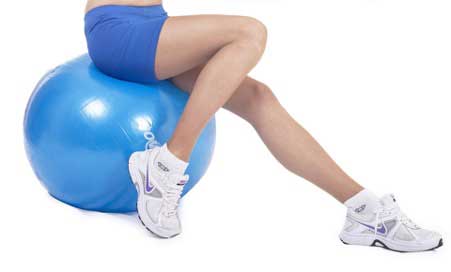Millions of people suffer from hip pain daily. The cause can be anything from an injury to poor posture, while the pain can range from mild discomfort to debilitating agony. Fortunately, there are several ways to relieve hip pain without expensive surgery or medication.
Here are seven of the best.
Exercise
One of the best things you can do for your hips is to keep them strong and limber with exercise. This helps relieve pain and increase mobility, as well as strengthen muscles that support the hip joint.
Be sure to include a mix of stretching, low-impact aerobics, and targeted strengthening exercises in your routine.
You can also look into more specialized exercises, such as yoga and pilates, which focus on postural alignment to help reduce hip pain. There are many online classes and videos available to help you get started.
Hip Arthroplasty
Hip arthroplasty is a minimally invasive procedure in which the surgeon removes damaged cartilage from the hip joint and replaces it with a prosthesis.
This partial hip replacement surgery helps restore mobility and reduce pain, making it a great option for severe hip pain. The procedure is typically done on an outpatient basis and recovery time is usually around six to eight weeks.
Additionally, if you’re looking for long-term relief from hip pain, a total hip replacement may be the best option. This procedure replaces the entire joint, making it stronger and more durable than a partial arthroplasty.
Physical Therapy
Physical therapy can help relieve hip pain from a range of causes, such as arthritis or injury. The physical therapist will assess your condition and design a personalized treatment plan that often includes therapeutic exercises, stretching, and strengthening activities.
Physical therapy is particularly helpful for those suffering from chronic hip pain.
On the other hand, physical therapy can also help prevent pain and injury by strengthening the muscles around the hip joint. This helps reduce strain on the joint and improve the overall range of motion.
Ice and Heat Therapy
Using ice and heat therapy at home can be a great way to help relieve hip pain. Ice helps reduce inflammation and numbs the area, while heat increases circulation and relaxes muscles.
To use this method of treatment, you should start with an ice pack or cold compress on the area for 15 minutes, followed by a heat pack or warm compress for another 15 minutes.
And if you’re looking for a more intense treatment, you can try cryotherapy and hyperthermia. These treatments use extremely cold or hot temperatures to target the affected area and help reduce inflammation and pain.
Acupuncture
Another great option for hip pain relief is acupuncture. This ancient Chinese practice involves inserting thin needles at specific points on the body to stimulate natural healing processes. It’s been shown to be effective in reducing pain and increasing mobility in the hip joint.
Additionally, acupuncture can help reduce stress and anxiety, which can contribute to ongoing pain. For those who don’t want to use needles, acupressure is a needle-free alternative that applies pressure to the same acupuncture points.
Medication
For mild to moderate hip pain, over-the-counter medications can help reduce inflammation and ease discomfort. Nonsteroidal anti-inflammatory drugs (NSAIDs), such as ibuprofen, are often the first line of treatment.
However, for more severe pain, your doctor may prescribe stronger medications such as opioids or muscle relaxants.
On the other hand, if you’re looking for something more natural, several supplements can be beneficial. Glucosamine and chondroitin are two common joint supplements that have been shown to help reduce hip pain and improve mobility.
There is also evidence that omega-3 fatty acids and curcumin may help reduce inflammation in the joint.
Corticosteroid Injections
Finally, corticosteroid injections can be an effective way to relieve hip pain caused by inflammation and swelling. These injections are typically given directly into the joint and contain corticosteroids, which are powerful anti-inflammatory medications.
Corticosteroid injections work by reducing inflammation and pain in the joint, which can help improve mobility. They’re typically used for more severe cases of hip pain and are often given in combination with other treatments such as physical therapy or medication.
There are a variety of treatments available for hip pain, from over-the-counter medications to acupuncture. Depending on the cause of your hip pain, one or more of these treatments may be effective in providing relief.
If you’re not sure where to start, talk to your doctor about which treatment options may be best for you.
And remember, it’s important to seek treatment if you’re experiencing any type of hip pain, as it can lead to further problems down the road.






No Comments